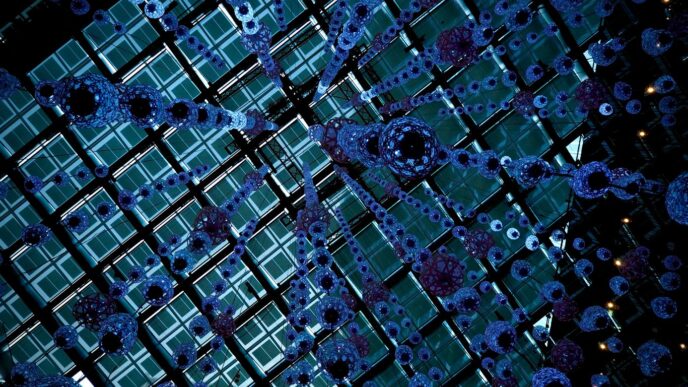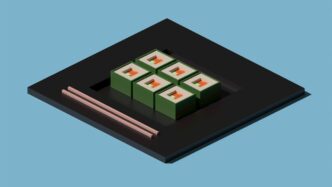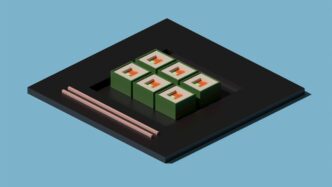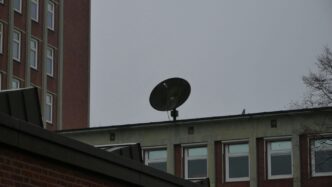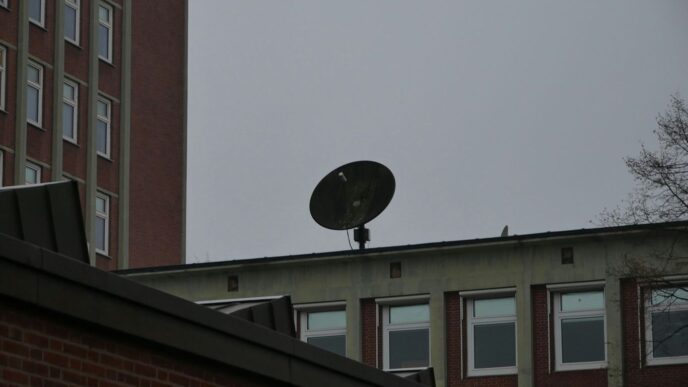Record-Breaking Distances In Quantum Teleportation

It’s pretty wild to think about, but scientists have been pushing the limits on how far they can ‘teleport’ quantum information. We’re not talking about beaming people across the galaxy like in the movies, of course. This is all about transferring the delicate quantum state of a particle from one place to another, without physically moving the particle itself. And the distances they’ve achieved are seriously impressive.
Teleportation Over 143 Kilometers Through Free Space
One of the most talked-about achievements happened back in 2012. Researchers managed to teleport quantum information over a whopping 143 kilometers (that’s about 89 miles!) using free space. They set up two optical links, one for the quantum stuff and one for the classical communication needed to make it work, between two observatories in the Canary Islands. This experiment really showed that long-distance quantum teleportation was possible, even without relying on fiber optic cables. It involved some clever tech, like special detectors and a way to keep the timing synchronized between the two distant locations. It’s a big deal because it opens up possibilities for things like secure communication networks that span large areas.
Fiber Optic Achievements Exceeding 100 Kilometers
While free-space teleportation is cool, using fiber optic cables is another major way scientists are extending the reach of quantum teleportation. Think of it like sending a super-special message through a very long, protected wire. There have been some fantastic results here too. For instance, in 2015, a team used really sensitive detectors, the kind that can spot single photons, to teleport quantum information over 102 kilometers (around 63 miles) of optical fiber. This kind of work is important because much of our current communication infrastructure relies on fiber optics. Being able to do quantum teleportation over these existing networks could pave the way for integrating quantum technologies into what we already have.
Here’s a quick look at some of the distances achieved:
| Medium | Distance (km) | Year | Notes |
|---|---|---|---|
| Free Space | 143 | 2012 | Between astronomical observatories |
| Optical Fiber | 102 | 2015 | Using advanced single-photon detectors |
| Optical Fiber | 97 | N/A | Earlier record |
Space-Based Quantum Teleportation Milestones
And then there’s space! Sending quantum information into orbit and back, or between satellites, is the next frontier. It’s incredibly challenging because you have to deal with the harsh environment of space and the vast distances involved. However, there have been some amazing steps forward. For example, experiments have successfully teleported quantum states over distances of up to 1,400 kilometers using satellites. This is huge for thinking about a global quantum internet. Imagine being able to link quantum computers or secure communication systems across continents using satellites. It’s still early days, but these space-based milestones are critical for building that future.
Advancements In Quantum Teleportation Techniques
Quantum teleportation, while sounding like science fiction, is really about sending quantum information from one place to another. It’s not about beaming people around, but rather about transferring the exact state of a quantum particle. This has gotten a lot more sophisticated lately, moving beyond just sending single bits of quantum information.
Deterministic Quantum Teleportation Achieved
For a long time, quantum teleportation was a bit of a hit-or-miss affair. You’d try to send the information, and sometimes it worked, sometimes it didn’t. This was largely due to the probabilistic nature of certain quantum measurements. However, researchers have made big strides in making this process deterministic. This means that when you try to teleport a quantum state, it actually happens every time, or at least with very high reliability. This is a huge deal for practical applications because you can’t build a reliable system if the core process is unreliable.
Teleporting Multiple Degrees of Freedom
Initially, experiments focused on teleporting just one property of a quantum particle, like its spin or polarization. But quantum particles have more going on than just one characteristic. Recent breakthroughs have shown that we can now teleport multiple properties of a quantum particle simultaneously. This is like being able to send not just the color of an object, but its shape and texture too, all at once. This ability to transfer more complex quantum states is vital for more advanced quantum communication and computation.
Open-Destination Teleportation Demonstrated
Another cool development is ‘open-destination’ teleportation. Think about it like sending a package, but instead of knowing exactly which mailbox it’s going to, you can send it to a whole neighborhood, and it will find its way to the correct recipient. In quantum terms, this means the sender doesn’t need to know the exact location of the receiver beforehand. The quantum information can be sent to a network of potential receivers, and it will be correctly teleported to one of them. This flexibility is a big step towards building more complex quantum networks where devices might not always have pre-assigned addresses.
The Underlying Physics Of Quantum Teleportation
So, how does this whole quantum teleportation thing actually work? It’s not like in the movies where a person beams from one place to another. Instead, it’s all about transferring information, specifically the exact quantum state of a particle, from one spot to another. Think of it like sending a very specific blueprint, not the actual building.
Transferring Quantum Information Over Distance
At its core, quantum teleportation is a way to move quantum information from a sender to a receiver. The tricky part is that you don’t actually need to know what that information is beforehand. The sender just needs to perform a specific kind of measurement. This measurement, combined with some regular, classical communication (like a phone call or email), allows the receiver to recreate the original quantum state. This process is limited by the speed of light because that classical information has to travel. You can’t get the full picture until that message arrives.
The Role Of Entanglement And Classical Communication
This is where things get really interesting. Quantum teleportation relies on a bizarre phenomenon called entanglement. Imagine you have two particles that are linked, no matter how far apart they are. Measuring something about one instantly tells you something about the other. It’s like having two magic coins; if one lands heads, you know the other must be tails, even if they’re on opposite sides of the planet.
Here’s a simplified breakdown of the steps:
- Entangled Pair Creation: You start by creating a pair of entangled particles. One particle stays with the sender (Alice), and the other goes to the receiver (Bob).
- Sender’s Measurement: Alice takes the particle whose quantum state she wants to teleport and performs a special joint measurement on it along with her half of the entangled pair. This measurement scrambles the original state but produces classical bits of information.
- Classical Communication: Alice sends these classical bits to Bob. This is the part that’s limited by the speed of light.
- Receiver’s Reconstruction: Bob uses the classical information he received from Alice to perform a specific operation on his entangled particle. This operation transforms his particle into an exact replica of the original quantum state Alice wanted to send.
Limitations Imposed By The Speed Of Light
It’s super important to remember that while entanglement seems to create instantaneous connections, you can’t actually send information faster than light using it. That’s because the teleportation process isn’t complete until Bob receives the classical information from Alice. Without that classical data, Bob’s particle is just in a random state. So, even though the quantum weirdness happens instantly, the actual transfer of usable information is bound by how fast light can travel. This is a fundamental rule of physics that even quantum mechanics has to follow.
Key Experiments In Quantum Teleportation History
Quantum teleportation, a concept that sounds like pure science fiction, has a surprisingly rich experimental history. It’s not about beaming people across the galaxy, but about transferring quantum information from one place to another. This process relies on some pretty mind-bending physics, like entanglement, which Einstein famously called "spooky action at a distance."
Early Verifications And Distance Increments
The theoretical groundwork for quantum teleportation was laid out in a groundbreaking paper in 1993 by Bennett and his colleagues. They proposed a way to send quantum information using a combination of entangled particles and classical communication. It took a few years, but the first experimental confirmations started popping up in the late 1990s.
- 1997: Two independent research groups, one led by Sandu Popescu and another by Anton Zeilinger, successfully demonstrated quantum teleportation for the first time. These experiments were crucial in showing that the theoretical proposals could actually be put into practice.
- Early 2000s: Researchers began pushing the boundaries, not just in terms of distance but also in the types of quantum states they could teleport. Experiments started involving photons, atoms, and even superconducting circuits.
Teleportation Across The Danube River
One of the more visually striking early experiments involved teleporting quantum information across the Danube River. This wasn’t just a symbolic gesture; it was a practical demonstration of how quantum teleportation could work over significant, real-world distances.
- The Setup: The experiment typically involved creating entangled pairs of photons. One photon would be sent to one side of the river, and the other to the opposite bank.
- The Process: By performing specific measurements on one photon and sending classical information about those measurements to the other side, the quantum state of the distant photon could be reconstructed.
- The Significance: This experiment, and others like it, showed that quantum teleportation wasn’t confined to sterile lab environments. It proved its potential for practical applications where information needs to be moved between separate locations.
Experiments With Atomic Ensembles
While early experiments often focused on photons, researchers also explored using atoms and atomic ensembles for quantum teleportation. This opened up new avenues for storing and manipulating quantum information.
- Deterministic Teleportation: A significant milestone was the achievement of deterministic quantum teleportation with atoms in 2004 by a team at the University of Innsbruck. This meant the teleportation happened reliably, without needing to wait for a specific probabilistic outcome.
- Quantum Process Tomography: Later experiments, like one in 2007, used techniques like quantum process tomography to meticulously analyze and verify the teleportation process with atoms, ensuring the fidelity of the transferred quantum state.
- Information Transfer: These atomic experiments demonstrated the transfer of quantum information between different types of quantum systems, showing flexibility in how quantum states could be moved and manipulated.
Future Implications Of Quantum Teleportation

So, what does all this record-breaking quantum teleportation actually mean for us? It’s not about beaming people across the galaxy like in the movies, at least not yet. But it is a huge step towards some seriously cool stuff that could change how we communicate and compute.
Towards A Global Quantum Internet
Imagine a network where information isn’t just sent, but teleported. This is the idea behind a global quantum internet. Instead of just sending bits of data, we could send quantum states, which are way more complex and secure. This would allow for things like:
- Ultra-secure communication: Because quantum states are so fragile, any attempt to snoop would immediately break the connection, alerting users. This is way beyond current encryption.
- Distributed quantum computing: Linking up multiple smaller quantum computers to create a much more powerful one, capable of tackling problems we can’t even dream of solving today.
- Highly sensitive sensor networks: Imagine telescopes or medical scanners that are so precise they can detect the tiniest signals, all linked together through quantum entanglement.
This isn’t science fiction anymore. Researchers are already working on the building blocks, like quantum repeaters that can extend the range of teleportation, making a worldwide quantum network a real possibility in the coming decades.
Enabling Quantum Computing And Communication
Quantum teleportation is a key ingredient for making quantum computers and communication systems actually work. Think of it like this: quantum computers use qubits, which are delicate little things. Teleportation provides a way to move these qubits around without them getting messed up by their environment. This is super important for:
- Error correction: Quantum computers are prone to errors. Teleportation can help move information to a safe place or correct errors as they happen.
- Connecting quantum processors: Just like we connect classical computers with cables, we’ll need ways to connect quantum processors. Teleportation offers a way to do this, even if the processors are far apart.
- Secure key distribution: Quantum key distribution (QKD) uses quantum mechanics to create unbreakable encryption keys. Teleportation can play a role in distributing these keys over longer distances.
The ability to reliably teleport quantum information is what separates theoretical quantum computing from practical, large-scale applications.
Satellite-Based Quantum Networks
Getting quantum signals to travel long distances on Earth through fiber optics or free space is tough. Signals get weaker, and there are physical limits. That’s where satellites come in. By using satellites, we can overcome these distance limitations and create truly global quantum networks.
Here’s how it could work:
- Ground stations: These would generate entangled particles and send one to a satellite.
- Satellite relay: The satellite, in orbit, would receive the particle and then teleport its quantum state to another ground station, potentially on the other side of the planet.
- Global coverage: By using a constellation of satellites, we could create a network that covers the entire globe, enabling secure communication and distributed quantum computing on an unprecedented scale.
Innovations Driving Quantum Teleportation Progress
It’s pretty wild how fast quantum teleportation is moving forward. A lot of the recent progress isn’t just about going further, but also about doing it faster and more reliably. Think of it like upgrading from dial-up internet to broadband – suddenly, a whole lot more is possible.
High-Speed Teleportation Rates
For a long time, quantum teleportation was kind of slow. We’re talking about transferring information at rates that would make a snail look speedy. But that’s changing. Researchers have managed to push the speed up to about 7.1 qubits per second. That might not sound like much compared to your home internet, but in the quantum world, it’s a huge leap. This speed-up is a big deal for building things like a quantum internet that can actually be used.
Advanced Detector Technologies
Part of the speed and reliability issue comes down to how we detect the quantum information. Old detectors weren’t very good, leading to lost signals and errors. Now, there are new, super-sensitive detectors, like superconducting nanowire single-photon detectors. These are way better at picking up the faint quantum signals. This improved detection is key to making teleportation more efficient and less prone to mistakes.
Active Feed-Forward Systems
Another clever trick is using ‘active feed-forward’. Imagine you’re trying to send a message, but the person receiving it needs to adjust something based on what you just sent. Feed-forward is like sending that adjustment instruction almost instantly. In quantum teleportation, this means that once the sender makes a measurement, they can immediately send information to the receiver telling them how to set up their equipment. This cuts down on delays and makes the whole process much smoother. It’s like having a real-time conversation instead of sending letters back and forth.
What’s Next?
So, we’ve seen some pretty wild stuff happen with quantum teleportation lately. Breaking distance records, like that 143 kilometers across the Canary Islands, is a huge deal. It’s not like in the movies, you know, beaming people around. It’s about sending tiny bits of information, quantum information, from one place to another. This latest experiment shows we’re getting much better at doing this over longer distances, which is pretty important if we ever want to build a quantum internet or connect quantum computers. It’s still early days, but these kinds of breakthroughs mean we’re moving closer to making some of that sci-fi sounding tech a reality. It’s exciting to think about what comes next.




